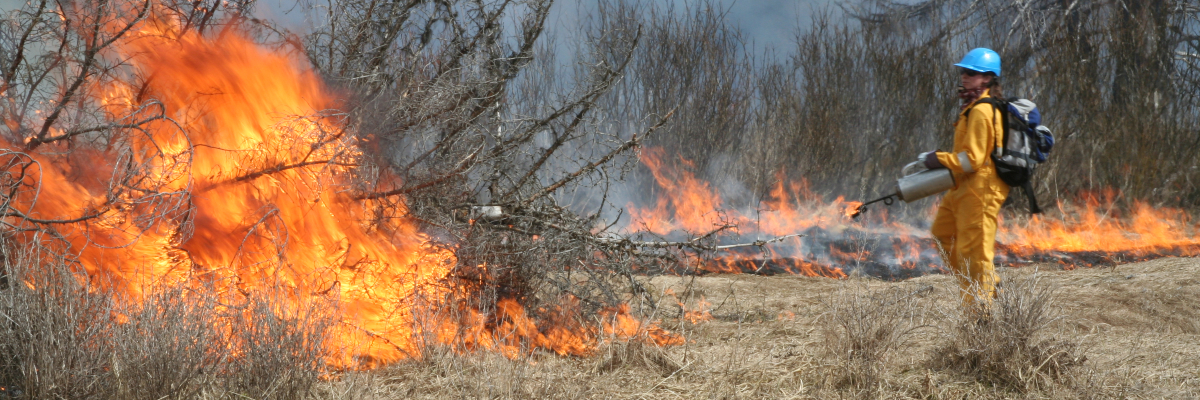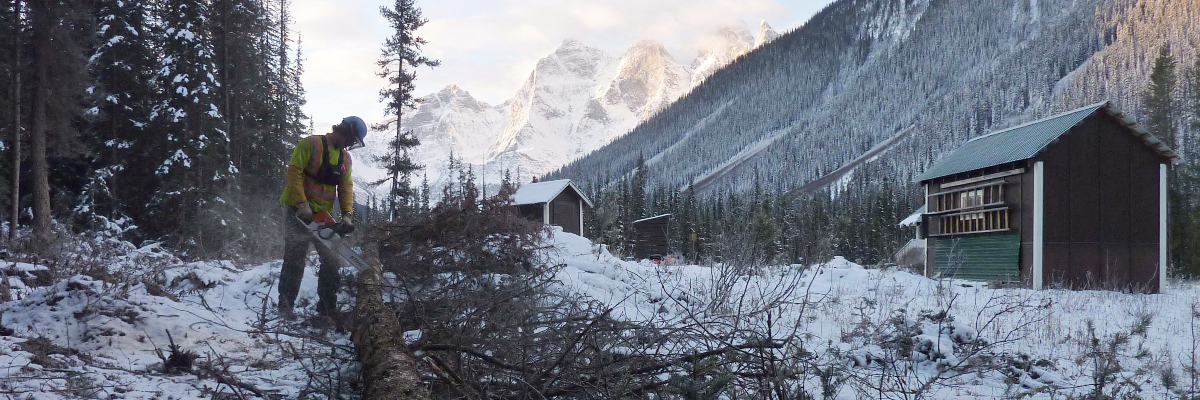Fire protection and restoration projects
Public safety is at the core of everything that we do, and wildfire response is part of our daily operations. We understand the risk of wildfire in a forested community. We take actions to reduce the potential impacts of a wildfire while improving forest health. Below you will find information on fire protection and restoration projects within Yoho National Park.
Prescribed fires

Prescribed fire operations will only be conducted when predetermined weather and site conditions are met.
2024 Prescribed Fires in Yoho National Park
Kicking Horse Meadow 1
Date: Spring/Fall
Size: 20.3 hectares
Location: South of Field, in central Yoho National Park.
Additional details: The Kicking Horse Meadow 1 prescribed fire is part of a larger meadows restoration plan. This prescribed fire will restore open meadow and grassland. It will do this by encouraging re-growth of native grass and shrub species.
Float Creek
Date: Spring/Fall
Size: 830 hectares
Location: South and west-facing slopes on Mount Owen, in central Yoho National Park.
Additional details: The natural fire cycle in Yoho National Park has been altered. This prescribed fire will restore young, fire-regenerated habitat where species at risk like grizzly bears and whitebark pine can thrive. It will also create a fire break in the continuous forest, helping prevent the spread of wildfires.
Porcupine Valley
Date: Spring/Fall
Size: 3,300 hectares
Location: In the Porcupine Valley, along the western boundary of Yoho National Park.
Additional details: The natural fire cycle in Yoho National Park has been altered. This prescribed fire will restore young, fire-regenerated habitat where species at risk like grizzly bears and whitebark pine can thrive. It will also create a fire break in the continuous forest, helping prevent the spread of wildfires.
Ice River
Date: Spring/Fall
Size: 2,986 hectares
Location: In the Ice River Valley, east of Hoodoo Creek Campground near the southern boundary of Yoho National Park.
Additional details: The natural fire cycle in Yoho National Park has been altered. This prescribed fire will restore young, fire-regenerated habitat where species at risk like grizzly bears and whitebark pine can thrive. It will also create a fire break in the continuous forest, helping prevent the spread of wildfires. Additionally, this fire will be part of a research project on prescribed fire and mountain goat habitat.
Fire protection and restoration projects in nearby national parks:
Wildfire risk reduction and FireSmart™ projects

Wildfire risk reduction work helps limit fire intensity, reduces the potential for spot fires from windblown embers, and improves the effectiveness of fire suppression techniques. FireSmart™ is a key part of this work.

Did you know: Parks Canada is an active member of the FireSmart™ program. The FireSmart™ program empowers the public and increases community resilience to wildfire across Canada.
The seven FireSmart™ disciplines are the foundation of Parks Canada’s wildfire risk reduction program:
- public education
- emergency planning
- vegetation management
- legislation
- development
- interagency cooperation
- cross-training
Learn more about how you can protect yourself and your community.
Current wildfire risk reduction and FireSmart™ projects:
FireSmart™ at Emerald Lake (expected completion November 2024)
Work at Emerald Lake is planned for early October and is expected to continue through the fall. Work will occur in the vicinity of Emerald Lake Lodge with crews clearing and thinning trees and brush next to buildings and within a 100-metre radius.
Vegetation will be hand-thinned, and debris burned on site, conditions permitting. Work will take place seven days a week during daylight hours. Visitors and residents can expect to hear chainsaws and see crews working. Treatment areas will be closed. The work will not affect trails, roads, or facilities. Closure details will be posted on site. Please respect all closures and warning signs. Minimal smoke may be visible. Burning will only take place when safe to do so and when appropriate venting conditions exist.
This work is a based on a larger wildfire risk evaluation and has undergone both environmental and cultural impact assessments.
Pile Burning (seasonal, ongoing)
During wildfire risk reduction work, trees, tree limbs, and brush are put into piles. Sometimes these piles of woody debris are too wet, or venting conditions are too poor to burn. These piles are left, and crews return to burn when the piles are dry, and conditions are good.
The piles of woody debris are in different locations around Yoho National Park.
Burning at each location will only take place when safe to do so and when appropriate venting conditions exist. Visitors and residents can expect to see smoke. Treatment areas will be closed when crews are burning the piles of woody debris. The work will not affect trails, roads, or facilities. Closure details will be posted on site. Please respect all closures and warning signs.
Learn more about Parks Canada's efforts in reducing the risk of wildfires across the country.
Email notification lists
To be added to an email notification list, please contact feullyk-llykfire@pc.gc.ca.
- Smoke notification list: Residents who are sensitive to smoke can receive advance warning of burning.
- Community stakeholders list: Fire information for local organizations and businesses who wish to stay informed about fire operations.
- Date modified :